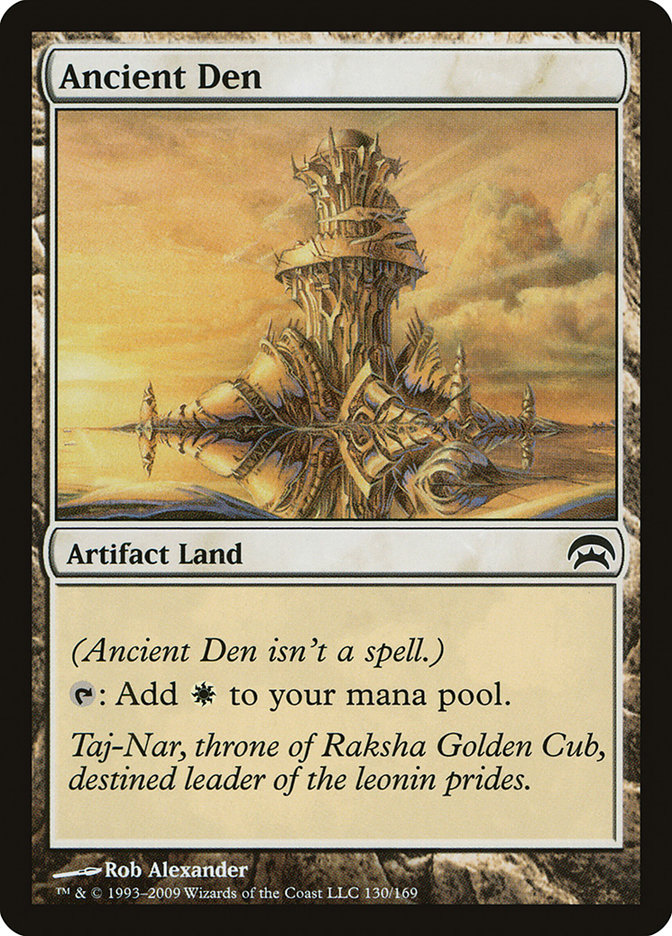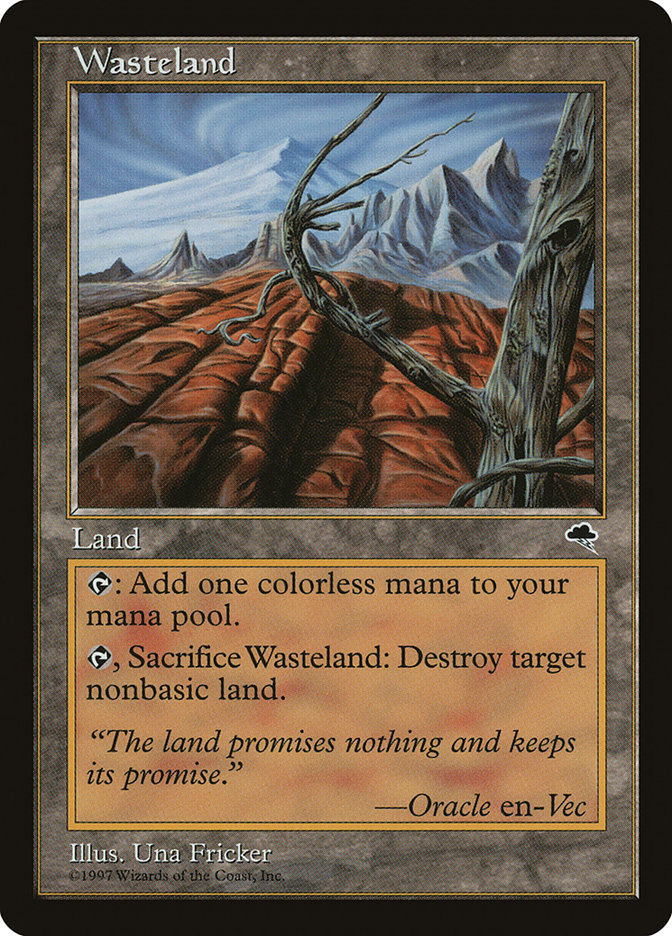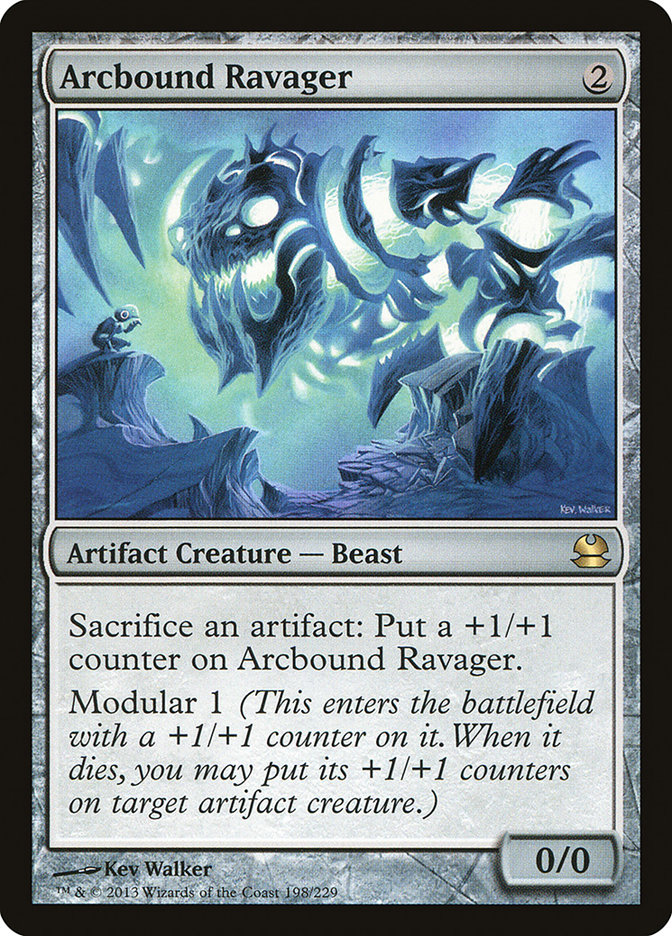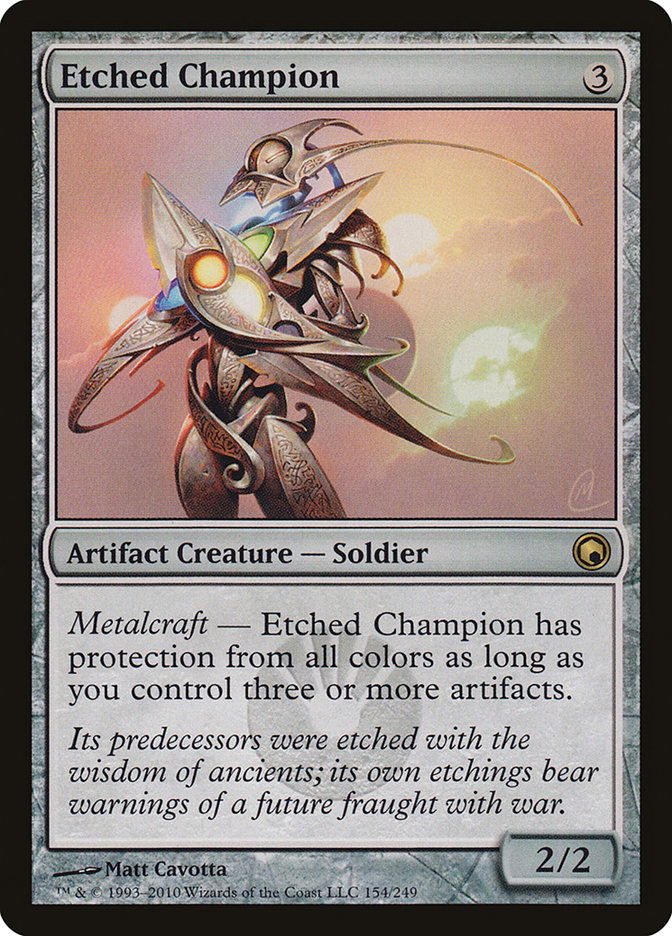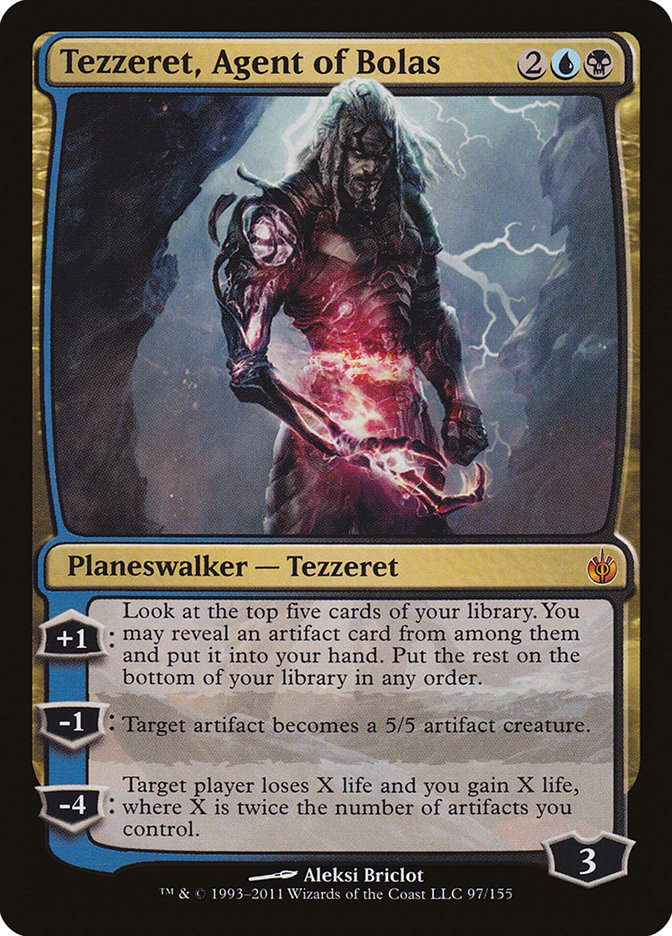Last week’s comments presented a clear mandate. You, dear reader, want me to build decks—new decks—that beat the very best of what Legacy has to offer. An occasional look at the RUG Delvers of the format is fine, but by and large you want to see the breadth of what can be done in this format.
I’m game.
My thought process in determining what to play was informed by the most powerful interactions of the format. I delineated what the most oppressive strategies are and then set out to beat them. Here are the things I was determined to beat:
- "The RUG Delver package." Some decks lose to Stifle and Wasteland due to an ambitious mana base; others lose to the wall of Force of Wills, Dazes, Spell Pierces, and Flusterstorms; yet others lose to the ruthless mana efficiency of the deck leading to stalled games where the villain seemingly always draws more live cards. No matter how you cut it, this is a real problem.
- Fast combo. Pretty self-explanatory, but comes in all shapes nowadays—Lion’s Eye Diamond, Show and Tell, and Golgari Grave-Troll are all contenders.
- Deathrite Shaman. Just the card Deathrite Shaman. As it turns out, the card does everything. There are still ways to beat it, but you have to be very cognizant of what the card will do against you. Some brews are out of the question immediately—no cutesy Protean Hulk or Academy Rector shenanigans. If you’re playing with your graveyard, you either need a Plan B (Show and Tell in Reanimator) or ruthless redundancy (sixteen-plus dredgers, Street Wraith, and Phantasmagorian in Manaless Dredge).
It’s no coincidence that Carsten Kotter described these strategies as the triumvirate pillars of Legacy. They’re the best for a reason. They’re also not without weaknesses.
To beat Delver decks, I wanted a deck that could produce enough mana to beat Daze while having sufficient threat density to beat the fact that their deck plays eighteen lands. If possible, I’d like my mana base to beat Stifle.
To beat combo, I wanted a deck that could potentially kill on turn 4 and then sideboard a ton of "I just win" anti-combo cards.
To beat Deathrite Shaman, I wanted a deck that doesn’t play fetch lands (so they can’t piggyback mine for mana production), doesn’t rely on graveyard interactions, and isn’t vulnerable to getting spot-removaled out of the game.
As an additional challenge to myself, I wanted to write about an aggressive deck, as the last three decks I talked about were a combo deck, a Delver deck, and a Deathrite deck. There is absolutely space in Legacy for people who want to attack. It just takes more work to find that space.
If the deck happened to be budget-friendly, so much the better.
I happened to find the sweet spot.
Creatures (24)
Planeswalkers (3)
Lands (17)
Spells (16)
Sideboard

Affinity never really took off in Legacy. People have discussed the viability of an Affinity lookalike in Legacy, just like every other once-good deck. The only person I know of who worked on a Legacy Affinity deck, however, is Owen Turtenwald circa two years ago.
It’s time for a long, hard look at how to build an aggressive artifact deck in this format.
It starts with the mana base:
4 Seat of the Synod, 4 Ancient Den, 4 Vault of Whispers: These cards are banned in Modern for being too good in an aggressive artifact deck. We want to play cards that want us to have a lot of artifacts in play. We also don’t want to play fetch lands since those get Stifled and/or Deathrite Shaman eats them for mana. I believe that blue, white, and black are the best colors for an Affinity deck, so I want to max out on all of these.
0 Inkmoth Nexus, 0 Blinkmoth Nexus: The Nexuses are the backbone of the Modern Affinity deck. Colored mana requirements are minimal in a mostly artifact deck, so the Nexuses are excellent ways to eke out more value and increase the deck’s resiliency to removal.
They’re really bad in Legacy.
Here’s why:
A big reason why creature lands are so good in Modern is that your lands don’t die a ton. In Legacy, your lands die all the time. You don’t want to put a Cranial Plating on an Inkmoth Nexus just to have it Wastelanded. It’s not worth it. There are better options.
0 Darksteel Citadel: There are definitely better options than this.
4 Ancient Tomb: This is the best land in the deck. Your deck is mostly artifacts, it wants to get on the board as soon as possible, and it wants to beat Daze. You’re an aggressive deck, so your life total matters very little. While the damage can matter against aggressive Delver draws, it also allows you to explode onto the board and race them. I would not cut any.
0 Glimmervoid: Given access to dual lands, I would rather play a dual land than a Glimmervoid. Neither counts as an artifact, but Glimmervoid can be destroyed by a removal-heavy opening hand. Given that we’re trying to cast three- and four-drops, I want every land to stay in play.
1 Tundra: Since you want to play Thoughtcast, your seventeenth land should be blue. Since all your other lands get Wastelanded, there’s no reason to play a basic land. The second color should help cast the maximum number of colored spells in your deck. As we’ll see later, that color is white.
4 Mox Opal, 4 Springleaf Drum, 4 Ornithopter, 4 Memnite: Although none of these are lands, they are all part of the mana base. As soon as you start cutting any of them, your draws become less explosive. Since we are playing this deck to maximize our explosive draws—thus the inclusion of Ancient Tomb—it makes no sense to cut down on any of these cards. It is possible that we will get flooded on these since our mana base is 29 cards, but that is a price worth paying to cast two-mana spells on turn 1.
17 lands: Do you not like casting your spells? Mulliganing with this deck is awful, and I hate doing it, so I can’t imagine forcing myself to draw more hands that don’t play Magic in a deck where individual power levels of cards are so low. When your cards all suck on their own, your mulligans hurt a lot more. You can’t mulligan to five and hope to mise them out with an early Delver of Secrets and a Wasteland—you’re still playing Ornithopter and Memnite. You’re going to lose if you have to mulligan more because you don’t have lands.
Our mana base has a number of strengths—it beats Stifle, it doesn’t enable opposing Deathrite Shamans, it synergizes with the rest of our deck, and some of it even attacks.
It is also much larger than most Legacy mana bases. In a long game, we are going to have fewer live topdecks. We are consciously trading long-game consistency for early-game explosive power.
What kind of power are we getting for our huge mana base?
4 Cranial Plating: The best payoff for playing an aggressive artifact deck. It’s worth noting that Plating also wants you to play a larger mana base since Plating is what makes Memnite trade up for Nimble Mongoose or even Tarmogoyf. If you start cutting zero-cost creatures for bigger spells, your draws get clunkier and you become more vulnerable to one-mana removal spells.
4 Arcbound Ravager: When Owen wrote an article about Affinity two years ago, he advocated against playing Arcbound Ravager. He argued that it matches up poorly against a format with so much hyperefficient spot removal since that makes it harder to sacrifice everything in play and connect with one modular-overloaded creature.
Legacy was different two years ago, but I also disagree with his premise. Arcbound Ravager is at its worst against sweepers and is at its best against spot removal.
Every removal spell that an opponent casts on an Ornithopter with Cranial Plating adds a counter to Ravager. When they come for Ravager, they have to bring another removal spell for the creature that it modulars onto. Yes, you can sacrifice your board to alpha strike them with a huge flier, but the true power of Ravager lies in its ability to change roles in a split second from Value Ravager to Lethal Suicidal Modular Ravager.
For those of you who are unfamiliar, an interlude: Arcbound Ravager was the most powerful card in older Affinity decks for its ability to set up game states where you attack with several creatures, your opponent blocks some, and you sacrifice nearly your entire board to Ravager, sacrifice Ravager to itself, use your Modular trigger to put a lot of +1/+1 counters on an unblocked flier, and deal them lethal no matter how they block. Owen’s argument—which has a lot of truth to it—is that you can’t proactively do that as much when Lightning Bolt and Swords to Plowshares are in the format. He’s right, but you don’t need to play that aggressively when you can play a slower game where they have to use removal spells inefficiently. After all, if they have to use two Swords to Plowshares on a Ravager and a Memnite, they’re unlikely to have another way to kill your next creature holding a Cranial Plating.
Arcbound Ravager’s stock gets better with the choice to max out on Opals, Drums, Memnites, and Ornithopters—it both has more things to eat and has more creatures to target with its modular trigger.
4 Etched Champion: I have been writing about how Legacy has become a board presence-heavy format as of late. There are a lot more creatures in control decks because of how good planeswalkers are. As it turns out, you need to kill Liliana and Jace somehow.
Etched Champion is at its best in formats where people play fewer Wrath of Gods and more Kitchen Finks. Legacy is a format where there are tons of Shardless Agents and Baleful Strixes and almost zero Supreme Verdicts and Pernicious Deeds. In a world where sweepers are abundant and small creatures are rare, Affinity is a much worse deck.
Right now, though, there’s almost nothing that touches a resolved Etched Champion. You almost always have metalcraft, you have Ravager and Cranial Plating to pump it up, and it can indefinitely block a Tarmogoyf if both players are low on creatures. The power of the Champ is a huge reason why Ancient Tomb is so good. You don’t have a way to reduce the cost of playing Champion, so your mana base should work to accommodate its cost.
It is worth noting that Champion sucks against combo. Not a whole lot you can do about that except board it out when they’re casting Dark Ritual.
4 Thoughtcast: The only Affinity card worth playing, but one of your best cards against grindy blue decks. It’s a one-mana Divination in a deck that produces a lot of mana very quickly. It is very likely to fit into your curve, and it lets you overpower opponents that are dead set on one-for-oneing you all game.
3 Tezzeret, Agent of Bolas: If I could play a 61st card, it would be the fourth copy of this. You have a ton of ways to accelerate Tezzeret into play as early as turn 2, all three of its abilities are fantastic, and it’s good against everything.
He puts a fast clock on opponents either by making three 5/5s or by ticking up once before going ultimate for twelve-plus points of life loss. There are times where someone has attritioned you down far enough that your most synergistic cards (Ravager and Plating) won’t do enough. Tezzeret is at his best in those moments.
0 Master of Etherium: This is a classic win-more card. It’s very big, but it requires too much to be going your way. You have to have blue mana in a deck that plays no fetch lands or cantrips (and usually only twelve or thirteen blue sources), two mana on top of that, and enough of a board presence that Master will be big.
Then they can’t have a removal spell for it.
Then they can’t have a bunch of chump blockers for it.
For its Glorious Anthem ability to be good, your opponent has to have done approximately nothing all game.
Given how grindy today’s midrange and control decks are, that set of expectations is unreasonable. I would rather play Ravager and Champion and acknowledge that my sweet creature will not always survive their removal spells.
0 Stoneforge Mystic: This is just bad. Again with the colored mana thing—your colored spells have a heavier cost in Affinity than they do in traditional Legacy fetch-dual decks. Your colored mana is not free. You don’t always draw the right artifact land or Mox Opal or Springleaf Drum. Sometimes, you just have an uncastable two-drop. That’s really bad.
Even when you do cast Stoneforge Mystic, you’re using it as a two-mana Steelshaper’s Gift for Cranial Plating. Why not just play Steelshaper’s Gift if you’re so hellbent on playing more Platings? This deck isn’t going to get a lot of value from a 1/2 white creature.
The reason why more Platings isn’t great is because Plating is lot worse for 2W than it is for two colorless.
Stoneforge Mystic could get Umezawa’s Jitte or Batterskull, but if that’s the case, why are you playing Memnites? You’re spending 2WW to put a 4/4 Germ into play when a 2U 6/6 Glorious Anthem isn’t cutting it. You can’t just look at a card in a completely different deck, say "that looks good, I’ll have that," and expect it to perform with equal power in a totally different context.
Also, Ancient Tomb is very good in this deck, and Stoneforge Mystic is bad with Ancient Tomb. In a deck filled with good interactions, Stoneforge Mystic sticks out like a sore thumb.
4 Signal Pest, 4 Vault Skirge: These cards aren’t really the payoff or the mana base, but they’re worth touching on. They’re evasive creatures that can be cast for one mana, they’re artifacts, and they provide a critical mass of attackers. Signal Pest is another card that gets much better with more zero-mana creatures, and Vault Skirge is a card that gets better with Arcbound Ravager.
Since this is an aggressive deck, it is important to keep your mana curve in mind. These are one-mana role players—nothing to write home about, but not every card needs to hit home runs. Signal Pest and Vault Skirge get on base, and that’s good enough for this deck.
0 Arcbound Worker, 0 Frogmite, 0 Myr Enforcer: The Mirrodin core of the deck that got put out of work by the Scars of Mirrodin core of the deck. Arcbound Worker and Frogmite are worse than Signal Pest and Vault Skirge because they lack evasion. In a format with—as I’ve repeated many times—so many random blockers, it’s very important to be able to ignore them where possible.
Worker and Frogmite are just outdated at this point. Worker can’t get past Deathrite Shaman, and Frogmite is a 2/2 that doesn’t always hit play on turn 1. Pest and Skirge always attack past ground pounders, they always hit play on turn 1, and they work better with the rest of the deck than these old fogeys.
Myr Enforcer is a relic of the past. It’s a top-end card that doesn’t beat Tarmogoyf. If even one of our artifact creatures dies, Myr Enforcer isn’t going to make it past a Tarmogoyf with a land and a cantrip in the graveyard. That’s not okay. There are other good reasons to bench the Enforcer, but that one is beyond good enough.
Let’s recap what this deck is trying to do. It plays an outsize mana base to turbo-charge its first two turns. It has tremendous internal synergy, and its cards can work together to overpower more individually powerful cards like Tarmogoyf. It plays top-end cards that are carefully selected to be nightmares for blue midrange decks to beat, but it does so at the cost of being very weak to combo decks.
Building a sideboard should be easy enough then: beat the hell out of combo decks.
When I work on sideboards, I initially try to deprive myself of as much decklist information as possible. I have found that if I look at other people’s sideboards, I start adapting my sideboard from theirs even when our maindecks are very different.
It is also often the case that their sideboard is meant to beat different cards and strategies than mine. As a result, I was fairly proud of myself when I thought of Chalice of the Void.
It’s perfect! It’s an incredible card against Elves, Reanimator, Storm, and all flavors of Delver decks. The mana curve works well because you can cut Signal Pest and only lock out your Springleaf Drums. You have four Ancient Tombs and Moxes, so your ability to cast it on turn 1 is very good.
Then a friend told me that Affinity had made Top 16 Baltimore.
With Chalice of the Void in the sideboard.
So, you know, that guy is pretty smart. Except he didn’t play four, which makes zero sense to me because Chalice is the best sideboard card I can imagine playing in Affinity. Also, he only played one Ancient Tomb, which is mindboggling.
Anyway, Chalice of the Void was my starting point, and I was locked in on four copies.
This also meant that any other combo hate couldn’t cost one. No Thoughtseize, no Cabal Therapy, and so on.
The next obvious inclusion is Ethersworn Canonist. Reid Duke just won an SCG Open with Glimpse of Nature, which Canonist happens to be pretty good against. Canonist is also great against Omniscience—you put it in off of their Show and Tell, their turn ends, and you (ideally) lethal them on your turn.
Also, I guess it’s fine against Storm.
Seven more slots to go, and I am 100% sure that I don’t want to play reactive value cards. I want only cards that will win me the game when they resolve.
Manaless Dredge just made Top 4 of a Legacy Open and Reanimator made the finals. What’s the best anti-graveyard card?
Most people would say "Relic of Progenitus because you can cycle it and it’s an artifact!"
I disagree. If I want a card to beat them, I want it to beat them, not kind of beat them and make up for its flimsiness by also drawing a card.
Leyline of the Void is the kind of card I want, but there’s a better option in the same vein.
Rest in Peace is the hero that Affinity needs, even if it’s not the hero that Arcbound Ravager wants. Even though Rest in Peace shuts off modular, it KOs Dredge, does a lot of damage to Reanimator, and can come in against Deathrite Shaman / Tarmogoyf decks as well. After all, if they’re playing a bunch of random creatures to gum up the ground and I have a card that kills 90%+ of those cards’ functionality, I should probably get it in my deck, right?
Rest in Peace has been proven to be good against RUG Delver in Miracles. The thing is that RUG can beat Rest in Peace because Miracles gives them a ton of turns to find, flip, and protect their Delvers—wouldn’t it be even better if RUG had fewer turns to race fully powered Affinity with just Insectile Aberrations?
I think so, even though it hurts Ravagers. Since it’s best on turn 1 or 2, we should play four.
The last three cards should either be more Storm hate or more Omniscience hate. Here’s the thing about Omniscience hate, though—it’s all really bad. We could play Iona, Shield of Emeria or Angel of Despair or Oblivion Ring or Vendilion Clique or Venser, Shaper Savant, but all of those lose to Trickbind and are only worth putting in our deck to beat exactly Omniscience.
I don’t like that. I would rather play a card that is yet another layer of quality hate against Storm but can also randomly ruin an Omniscience player. I want Mindbreak Trap. After all, it’s very plausible that Omniscience sets up a turn where they cast a bounce spell on Canonist, cast Show and Tell, and cast Enter the Infinite into Mindbreak Trap.
It’s not perfect, but it’s a lot better than boarding in Oblivion Ring and watching them cast Dream Halls. At least with Mindbreak Trap, we can choose to hold up four mana to exile their Dream Halls. We can also hope to Mindbreak Trap their Emrakul, the Aeons Torn since Trap "exiles" cards instead of countering them. It’s a big game, but we can dream, right?
It’s certainly better than playing garbage like Venser and hoping.
You will note that there’s nothing in the sideboard for decks like Goblins. That is by design. This deck can beat Goblins by casting Etched Champion and navigating complicated combat phases involving Arcbound Ravager. It’s not going to be a cakewalk, but this is a linear aggressive deck. You don’t improve linear aggressive decks by diluting their core theme; you improve them by committing to your primary game plan in deckbuilding.
As I noted earlier, the seventeenth land is a Tundra for its ability to cast eight sideboard cards as well as Thoughtcast and—rarely—part of Mindbreak Trap. If you’re on a budget, Glimmervoid isn’t a huge step down.
For those of you who noticed, this is one of the most budget-friendly decks in Legacy. If you have friends who play Modern, they might own a Modern version of this deck. The additions won’t cost you much – Ancient Tomb runs around $10 and everything except the Tundra is below that. Mox Opal is the most expensive card in the deck, but it’s a lot easier to find Mox Opal (and someone willing to give one up) than Force of Will.
As you may have noticed, this is also the sort of deck that can be adapted to beat various metagames. There are a lot of powerful artifacts in Magic’s history, and as long as people aren’t regularly playing things like Null Rod, you should have a fighting chance against most decks.
I’ll be back next week with videos from another Magic Online Legacy Daily Event. As always, I’ll be in the comments section and on Twitter. I appreciate all of the feedback that I got last week—it was encouraging to see so much enthusiasm for a format that I enjoy, and I feel lucky to get to share my thoughts on it with you each Tuesday.
Until next week,
@drewlevin on Twitter


